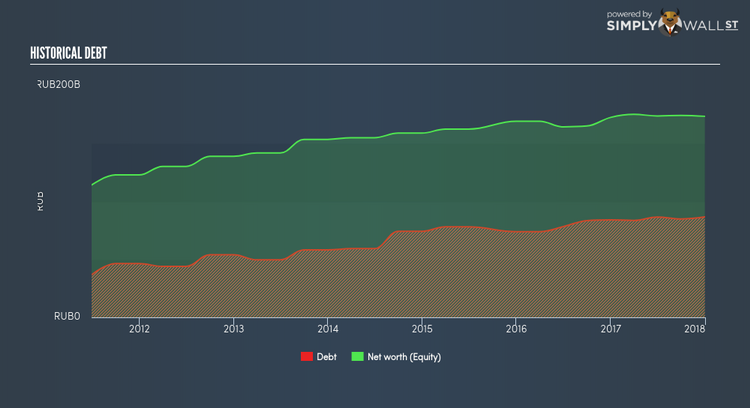What Investors Should Know About Public Joint-Stock Company Moscow United Electric Grid Company’s (MCX:MSRS) Financial Strength

Public Joint-Stock Company Moscow United Electric Grid Company (MISX:MSRS) is a small-cap stock with a market capitalization of RUРУБ35.65B. While investors primarily focus on the growth potential and competitive landscape of the small-cap companies, they end up ignoring a key aspect, which could be the biggest threat to its existence: its financial health. Why is it important? So, understanding the company’s financial health becomes crucial, since poor capital management may bring about bankruptcies, which occur at a higher rate for small-caps. I believe these basic checks tell most of the story you need to know. Though, given that I have not delve into the company-specifics, I suggest you dig deeper yourself into MSRS here.
How does MSRS’s operating cash flow stack up against its debt?
MSRS has sustained its debt level by about RUРУБ86.66B over the last 12 months made up of current and long term debt. At this current level of debt, MSRS currently has RUРУБ721.62M remaining in cash and short-term investments , ready to deploy into the business. Additionally, MSRS has produced cash from operations of RUРУБ26.34B over the same time period, resulting in an operating cash to total debt ratio of 30.39%, indicating that MSRS’s debt is appropriately covered by operating cash. This ratio can also be a sign of operational efficiency as an alternative to return on assets. In MSRS’s case, it is able to generate 0.3x cash from its debt capital.
Can MSRS meet its short-term obligations with the cash in hand?
Looking at MSRS’s most recent RUРУБ55.26B liabilities, the company is not able to meet these obligations given the level of current assets of RUРУБ27.17B, with a current ratio of 0.49x below the prudent level of 3x.
Does MSRS face the risk of succumbing to its debt-load?
MSRS is a relatively highly levered company with a debt-to-equity of 49.94%. This is not unusual for small-caps as debt tends to be a cheaper and faster source of funding for some businesses. No matter how high the company’s debt, if it can easily cover the interest payments, it’s considered to be efficient with its use of excess leverage. A company generating earnings after interest and tax at least three times its net interest payments is considered financially sound. In MSRS’s case, the ratio of 3.5x suggests that interest is appropriately covered, which means that lenders may be inclined to lend more money to the company, as it is seen as safe in terms of payback.
Next Steps:
MSRS’s high cash coverage means that, although its debt levels are high, the company is able to utilise its borrowings efficiently in order to generate cash flow. However, its lack of liquidity raises questions over current asset management practices for the small-cap. I admit this is a fairly basic analysis for MSRS’s financial health. Other important fundamentals need to be considered alongside. I suggest you continue to research Moscow United Electric Grid to get a better picture of the stock by looking at:
Valuation: What is MSRS worth today? Is the stock undervalued, even when its growth outlook is factored into its intrinsic value? The intrinsic value infographic in our free research report helps visualize whether MSRS is currently mispriced by the market.
Historical Performance: What has MSRS’s returns been like over the past? Go into more detail in the past track record analysis and take a look at the free visual representations of our analysis for more clarity.
Other High-Performing Stocks: Are there other stocks that provide better prospects with proven track records? Explore our free list of these great stocks here.
To help readers see pass the short term volatility of the financial market, we aim to bring you a long-term focused research analysis purely driven by fundamental data. Note that our analysis does not factor in the latest price sensitive company announcements.
The author is an independent contributor and at the time of publication had no position in the stocks mentioned.


